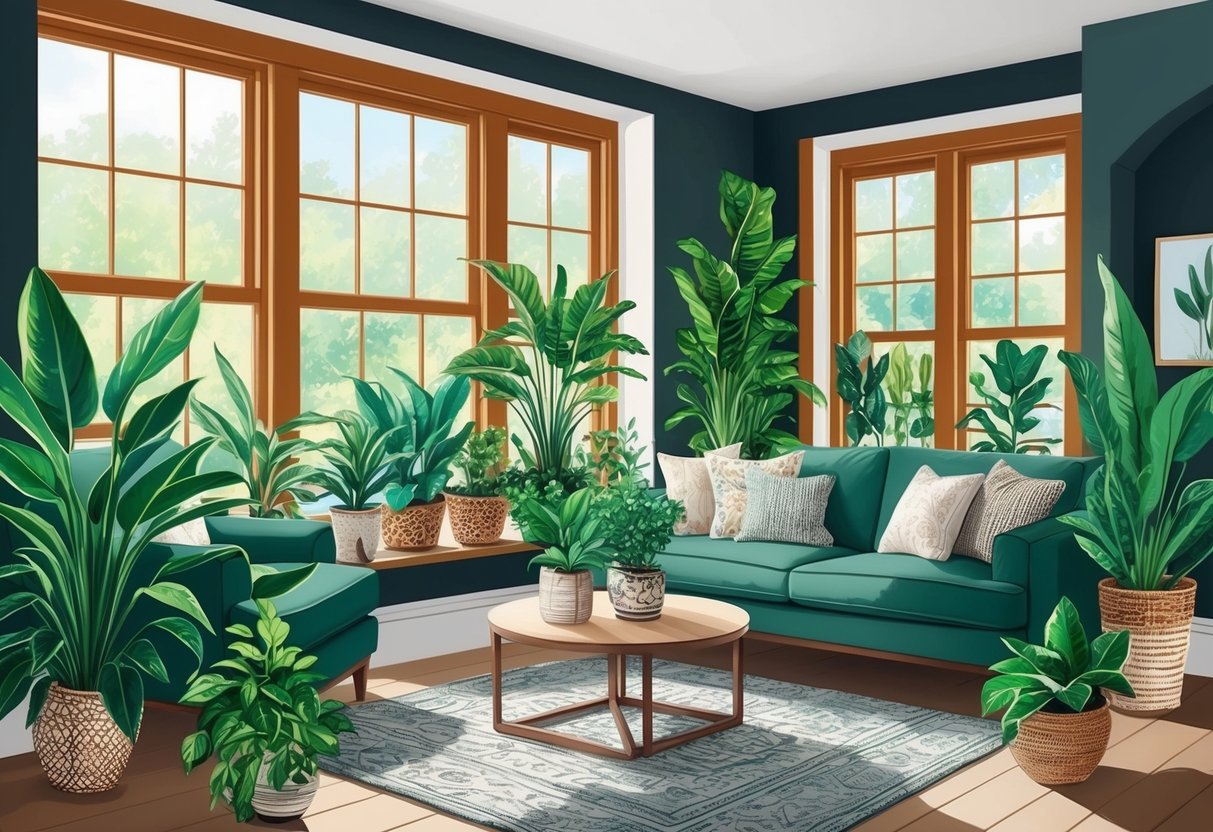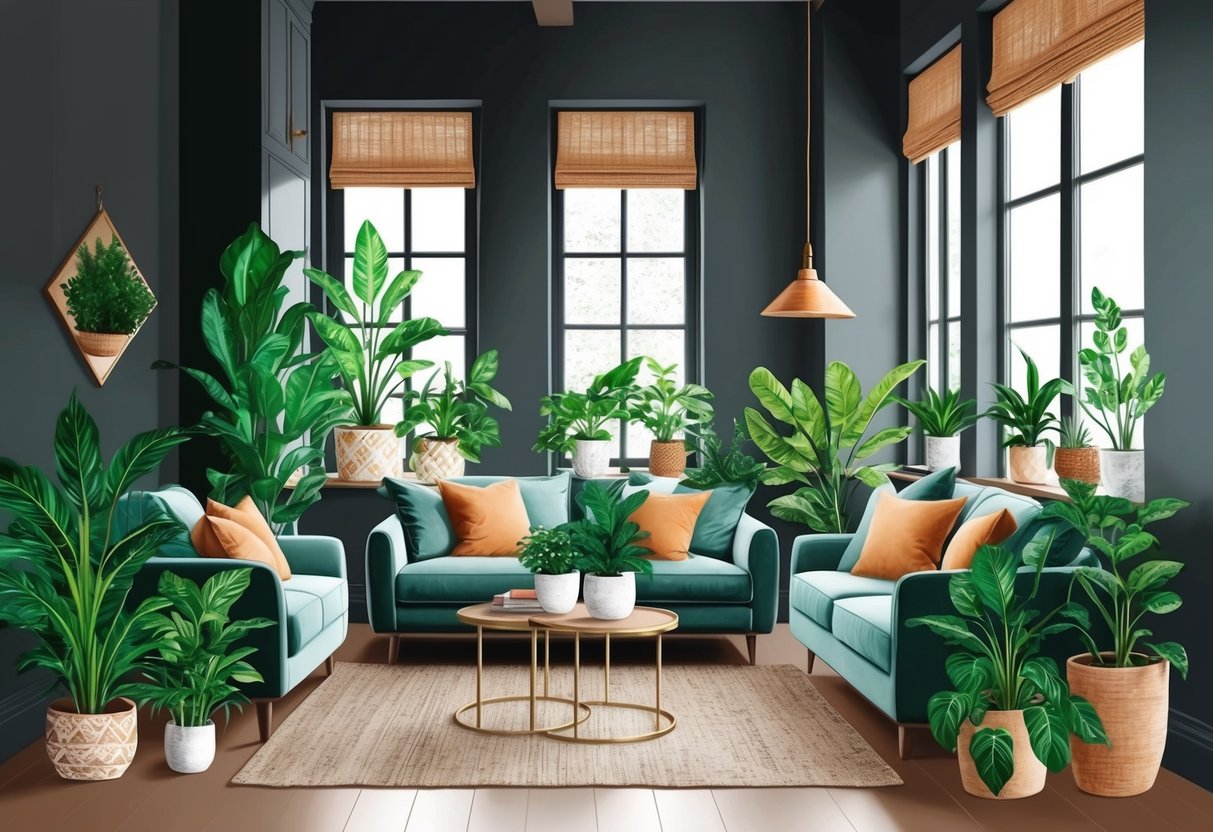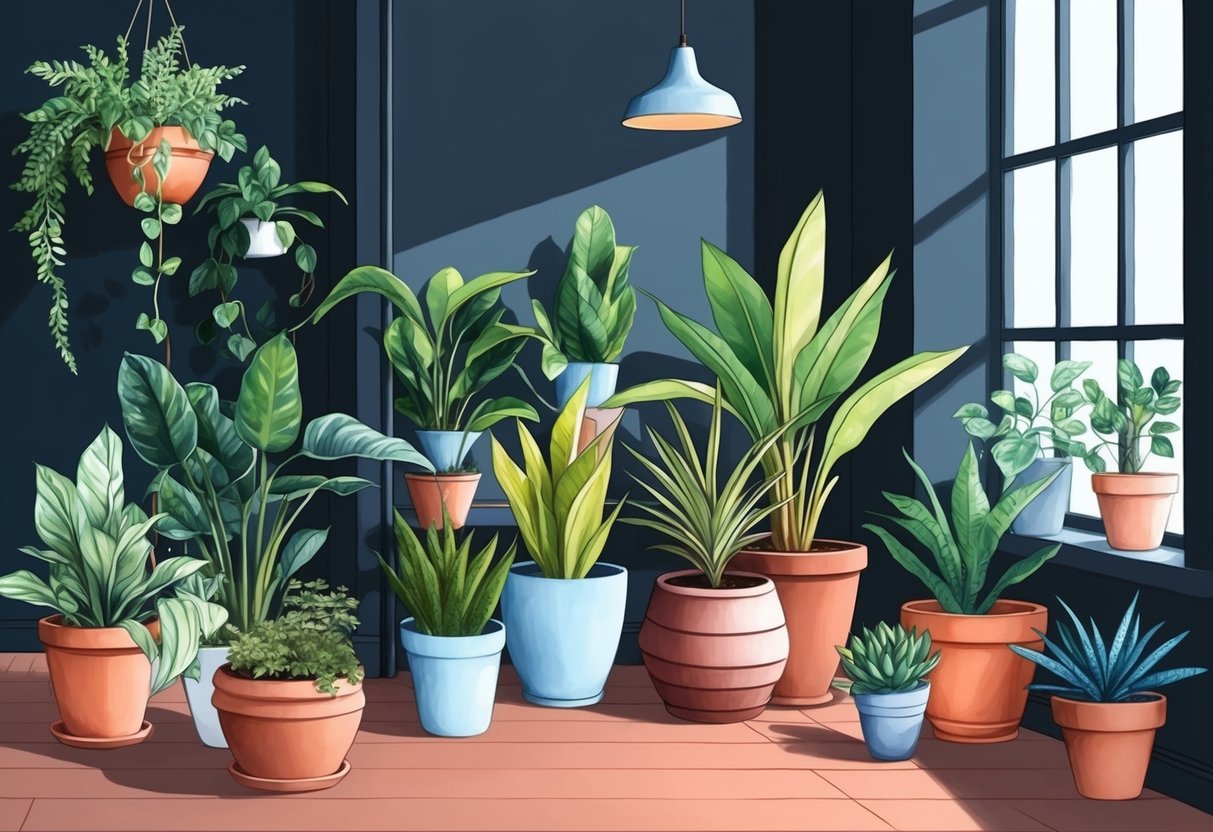
Caring for Shade-Loving Indoor Plants

Shade-loving indoor plants often feature lush foliage but need different care than sun-loving varieties. Their specific needs for water, humidity, soil, and problem-solving can help keep them thriving in lower light areas of any home.
Watering and Humidity Requirements
Most shade-loving indoor plants prefer soil that is consistently moist but not soggy. Overwatering is a common issue, so it is essential to let the top inch of soil dry out before watering again.
Plants like ferns and calatheas appreciate higher humidity, which makes them well-suited for bathrooms or kitchens. Maintaining humidity can be important for keeping the leaves healthy and free from browning.
Use a humidity tray or a small humidifier if the air is very dry. Mist the foliage lightly once a week, especially during winter when indoor heating lowers humidity levels.
Grouping plants together also helps create a microclimate with more moisture in the air.
Soil and Potting Recommendations
Proper soil and potting ensure that shade-loving houseplants develop strong roots and maintain vibrant foliage. Choose a well-draining potting mix formulated for indoor plants.
Avoid soils that retain excess water, as roots can rot when deprived of oxygen. Repotting should be done every one to two years, or when roots begin to crowd the pot.
Use containers with drainage holes to prevent stagnant water. Popular additions for better drainage include perlite or orchid bark, especially for species like peace lilies or pothos.
A quality potting mix for these plants typically contains a blend of peat moss, perlite, and vermiculite. For optimal growth, fertilize with a balanced liquid houseplant fertilizer every 4-6 weeks during the growing season.
Reduce feeding in fall and winter when growth slows.
Common Problems and Solutions
Shade-loving houseplants can experience issues like yellowing leaves, root rot, or pest infestations. Yellow leaves often signal overwatering or poor drainage—adjust the soil moisture or repot with a fast-draining mix if needed.
Root rot results from excess water; always check for wet, soggy roots and cut away any mushy portions. Pests such as spider mites and fungus gnats sometimes target indoor foliage.
Wipe leaves regularly with a damp cloth and use insecticidal soap if needed. If browning leaf tips occur, increase humidity and ensure filtered light is reaching the plant by rotating it weekly.
For more detailed diagnostics and care tips, look at trusted guides for shade-tolerant houseplants.
Frequently Asked Questions

Shade-tolerant houseplants are popular for their ability to thrive in the low natural light found inside many homes. From large statement plants to compact varieties, several options can add greenery and life to poorly lit spaces without sacrificing health or color.
What are the top indoor plants that can thrive in low-light conditions?
Several houseplants excel in low-light environments, including snake plant (Sansevieria), golden pothos, philodendron, peace lily, and certain types of ferns. These plants can adapt well to indirect light and are known for their resilience.
Options like golden pothos and philodendron are particularly popular due to their attractive foliage and minimal care requirements.
Which small indoor plants are well-suited for growth in dark rooms?
Compact options such as spider plant, Swedish ivy, certain varieties of bromeliads, and smaller maranta species are easy to fit on desks or shelves. Small peace lilies also adapt well to limited space and shaded interiors.
For even more possibilities, these small indoor plants thrive away from windows and work well in apartments or offices.
How do large indoor plants perform in spaces with minimal natural light?
Large shade-loving plants like some species of dracaena, cast iron plant, and tall sansevieria varieties tolerate low-light corners and provide a bold visual impact. While they may grow more slowly and require less frequent watering, their ability to adapt makes them suitable as large indoor focal points in areas with little sunlight.
Can you recommend any plants that are particularly good for brightening up dark corners?
Plants with light-reflective leaves, such as golden pothos, variegated leaves on aglaonema, and the glossy surface of peace lily, can help make dark corners appear brighter. Ferns and bromeliads also introduce interesting textures and color.
Look for species labeled as brightening options for sunless spaces to enhance dim rooms.
What characteristics make a house plant ideal for growing in shaded interiors?
Ideal shade houseplants have traits like slow or moderate growth rates, tolerance for infrequent watering, and the ability to photosynthesize efficiently in indirect light. Thick, waxy, or deep green leaves are common features, which help the plant conserve moisture and capture limited light.
Are there indoor plants that require no light to grow and if so, what are they?
All plants require some level of light to photosynthesize and remain healthy.
No true houseplant can thrive indefinitely in complete darkness.
Some varieties, like philodendron, have been reported to survive for sustained periods in very low-light conditions.
Continuous darkness will eventually hinder growth even for the most shade-resilient plants.
For best results, provide at least a small source of indirect or artificial light.